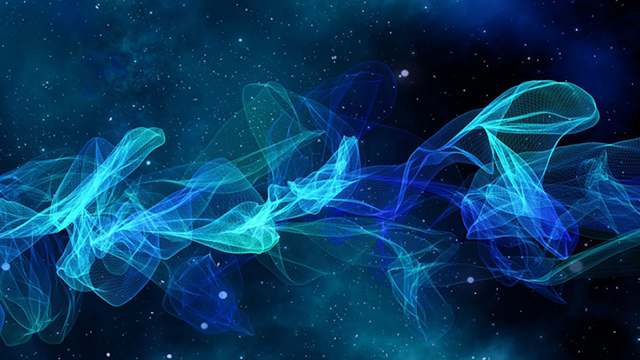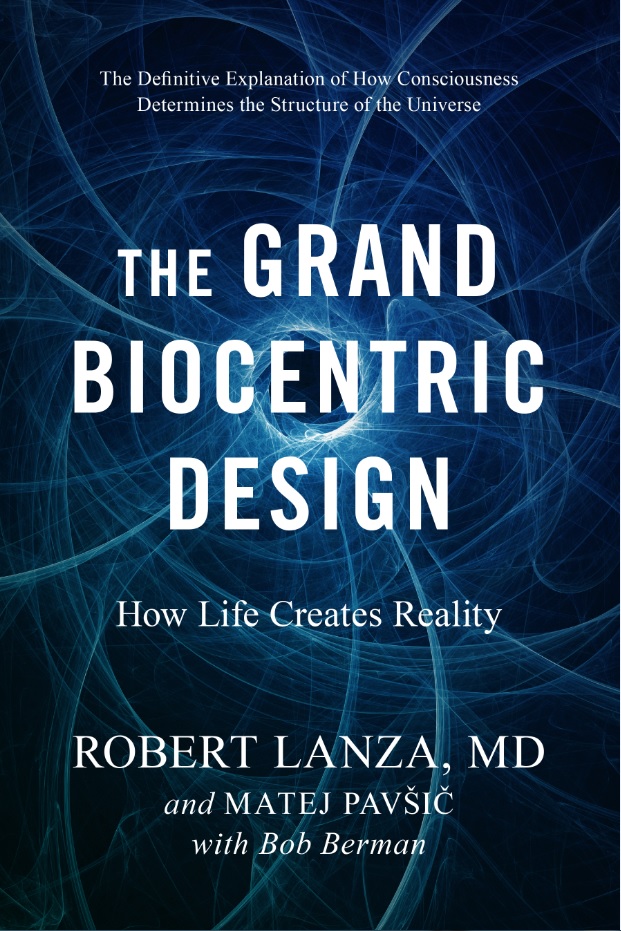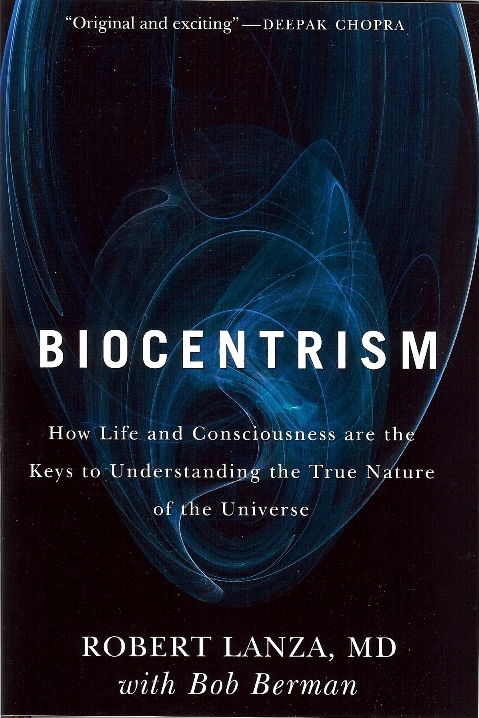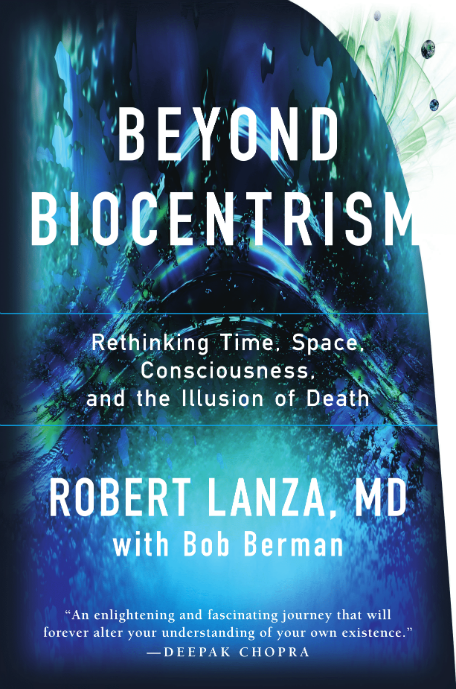Biocentrism builds on quantum physics by putting life into the equation

Change the Way You See the World Forever
“A new way of looking at the old problem of our existence … any short statement does not do justice to [Lanza’s] work”
– E.D. Thomas, 1990 Nobel Prize
Every now and then, a simple idea shakes the foundations of knowledge. The discovery that the earth was not flat challenged the way people perceived themselves and their relationship with the world. Our ancestors were challenged to believe that the earth was round, even though the ground they walked on seemed flat. Nothing in day-to-day experience hinted at the truth of this theory. “If the earth were really round,” it was argued, “Then the people at the bottom would fall off.”
Likewise, Biocentrism turns the world upside down again with the seemingly absurd idea that the Universe springs from life, not the other way around. Switching the perspective of the universe from physics to biology shatters everything we have ever known about reality.
We think life is just an accident of physics, but a long list of experiments suggests the opposite. Amazingly, if you add life and consciousness to the equation, you can explain some of the biggest puzzles of science. For instance, it becomes clear why space and time — and even the properties of matter itself — depend on the observer. It also becomes clear why the laws of the universe are fine-tuned for the existence of life. Until we recognize the universe in our head, attempts to understand the world will remain a road to nowhere.
This view of the world in which life and consciousness are bottom-line in understanding the larger universe is called biocentrism. It revolves around the way our consciousness relates to a physical process. It is a vast mystery that I have pursued my entire life with a lot of help along the way. I have also come to conclusions that would shock my predecessors, placing biology above the other sciences in an attempt to find the “theory of everything” that has evaded other disciplines.
We are taught since childhood that the universe is divided into two entities — ourselves, and that which is outside of us. This seems logical. “Self” is commonly defined by what we can control. We can move our fingers but I cannot wiggle your toes. The dichotomy is based largely on manipulation, even if basic biology tells us we have no more control over the trillions of cells in our body than over a rock or a tree.
Consider everything you see around you right now — for example, this page or your hands. Language and custom say it all lies outside us in the external world. However, everything you see and experience is a whirl of information occurring in your mind. You are this process, not just that tiny part you control. Your eyes are not just a portal to the world. You cannot see anything through the bone surrounding your brain. No, what you are seeing is a construction inside your head.
Consider everyday reality, for instance, the weather “outside.” You see a blue sky, but the cells in your brain could be changed so the sky looks green — or even red. In fact, with a little genetic engineering I could probably make everything that is red vibrate or make a noise, or even make you want to have sex like with some birds. You think its bright out, but your brain circuits could be changed so it looks dark out. This logic applies to virtually everything. Bottom line: What you see could not be present without your consciousness.
Emerson once said, “We have learned that we do not see directly, but mediately, and that we have no means of correcting these colored and distorting lenses which we are, or of computing the amount of their errors. Perhaps these subject-lenses have a creative power; perhaps there are no objects.”
So why is everyone shocked at the experimental findings of quantum physics? It is because science is still operating with an outdated paradigm. We still believe there is an external world that exists independent of the perceiving subject. Philosophers and physicists from Plato to Hawking have debated this idea. Niels Bohr, the great Nobel physicist, said, “Not so.” When we measure something, we are forcing an undetermined, undefined world to assume an experimental value. We are not “measuring” the world; we are creating it. At the legendary debates, Einstein presented ingenious ideas supporting the idea of a “real world out there,” but Bohr shot them all down and gradually won over the physics community. However, today most people still believe there is a real world out there. This issue is ancient and of course predates biocentrism, which explains why one view and not the other must be correct.
Scientific Evidence
Consider, for instance, the famous two-slit experiment. When scientists watch a particle pass through two slits in a barrier, the particle behaves like a bullet and goes through one hole or the other. However, if you do not watch, it acts like a wave and can go through both holes at the same time. But how can a particle “out there” change its behavior depending on whether you watch it or not? The answer is simple — reality is a process that involves our consciousness.
Or consider Heisenberg’s famous uncertainty principle. If there really is a world out there with particles just bouncing around, then we should be able to measure all their properties. But you cannot. For instance, a particle’s exact location and momentum cannot be known at the same time. So why should it matter to a particle what you decide to measure. Again — the answer is simple — the particles are not just “out there.”
The problem is this—we look at the world just like a chipmunk or a squirrel. The squirrel opens its eyes and the acorn is just miraculously there — it grabs it and scurries up the tree without further thought. We humans are the same — we wake up in the morning and think the world is just magically there. But experiment after experiment shows that not a single particle exists with real properties if no one is observing. It does not take a quantum physicist to realize that reality is a process that involves our consciousness.
We need to replace the old physics with a new biology. Space and time are not hard, cold objects like the shells you pick up along the beach. Wave your hand through the air. If you take everything away, what is left? The answer, of course, is nothing. The same thing applies for time–you cannot put it in a bottle like milk. Again, everything you experience is information occurring in your mind. Space and time are simply the mind’s tools for putting everything together.
The Disappearing Kitchen
Undeniably, it is the biological creature that makes the observations and creates the theories. Our entire education system — indeed, the construction of our language — revolve around a bottom-line mindset that assumes a separate universe “out there,” which we have each individually arrived on a very temporary basis. It is further assumed that we accurately perceive this external pre-existing reality and play little or no role in its appearance.
However, starting in the 1920’s, the results of experiments have shown just the opposite. The observer critically influences the outcome. An electron turns out to be both a particle and a wave. But how — and more importantly — where such a particle will be located remains dependent upon the very act of observation. These and similar experiments have befuddled scientists for decades. Some of the greatest physicists have described them as impossible to intuit. How can quantum physics be so impervious to metaphor, visualization and language? Amazingly, if we accept a life-created reality at face value, it all becomes simple to understand.
Take the seemingly undeniable logic that your kitchen is always present. You think its contents assume all their familiar shapes and colors whether or not you are in it. But consider: The shapes, colors, and forms known as your kitchen are seen because particles of light from the overhead bulb bounce off the various objects and then interact with your brain through a complex set of retinal and neural intermediaries. But on its own, light doesn’t HAVE any color, or any brightness, or any visual characteristics at all. It is merely an electromagnetic phenomenon. So you might think that the kitchen was “there” in your absence, but the unquestionable reality is that nothing remotely resembling what you can imagine could be present when a consciousness isn’t interacting.
Quantum physics comes to a similar conclusion. At night, you click off the lights and leave for the bedroom. Of course, the kitchen is there, unseen, all through the night. Right? But, in fact, the refrigerator, stove and everything else are composed of a shimmering swarm of matter/energy. The results of quantum physics, such as the two-slit experiment, tell us that not a single one of those subatomic particles actually occupies a definite place. Rather, they exist as a range of possibilities — as waves of probability — as Max Born demonstrated back in 1926. They are statistical predictions –nothing but a likely outcome. In fact, outside of that idea, nothing is there! If they are not being observed, they cannot be thought of as having any real existence — either duration or a position in space. It is only in the presence of an observer — that is, when you go back in to get a drink of water — that the mind sets the scaffolding of these particles in place. Until it actually lays down the threads (somewhere in the haze of probabilities that represent the object’s range of possible values), they cannot be thought of as being either here or there, or having an actual position, a physical reality.
Of course, once the wave function of the kitchen has collapsed, a record of it remains in our memory, and when we return to the kitchen our memories agree with it (those “kitchen” degrees of freedom recorded in our memory collapse when we first observe the kitchen).
Another way to think about this, is to think about watching a DVD. When the player is off, there is no movie. But when you return to the room and turn the player on, it leaps back into 3D. No matter how many times you turn the player on or off, the movie does not change — Emerald City is always at the end of the yellow brick road.
Indeed, it is here that biocentrism suggests a very different view of reality. Most people imagine the external world to exist on its own, with an appearance that more-or-less resembles what we ourselves see. Human or animal eyes, according to this view, are merely clear windows that accurately let in the world. If our personal window ceases to exist (such as in death) that does not in any way alter the continued existence of the external reality or its supposed “actual” appearance. A tree is still there, the moon still shines. They have an independent existence. True, a dog may see an autumn colors in shades of gray, and an eagle may perceive much greater detail among its leaves, but most creatures basically apprehend the same object, which persists even if NO eyes were upon it.
This “Is it really there?” issue pre-dates biocentrism. Once one fully understands that, there is no independent external universe outside of biological existence, the rest more-or-less falls into place.
No Time to Lose
Quantum theory increasingly casts doubts about the existence of time as we know it. The presence or absence of time is an important factor in any fundamental look into the nature of the cosmos.
Time is biocentric. When people speak of time, they are usually referring to change. But change is not the same thing as time. To measure anything’s position precisely, at any given instant, is to “lock-in” on one static frame of its motion, as in a film. Conversely, as soon as you observe movement or momentum you cannot isolate a frame — because momentum is the summation of many frames. Sharpness in one parameter induces blurriness in the other. Time is simply the way we animate events — the still frames — of the spatial world. It is a tool of our mind.
Consider an experiment that was recently published in the prestigious scientific journal Science. Scientists in France shot photons into an apparatus, and showed that what they did could retroactively change something that had already happened in the past. As the photons passed a fork in the apparatus, they had to decide whether to behave like particles or waves when they hit a beam splitter. Later on — well after the photons passed the fork — the experimenter could randomly switch a second beam splitter on and off. It turns out that what the observer decided at that point, determined what the particle actually did at the fork in the past. At that moment, the experimenter chose his past.
Critics claim this behavior is limited to the microscopic world. But this ‘two-world’ view (that is, one set of physical laws for small objects and another for the rest of the universe including us) has no basis in reason and is being challenged in laboratories around the world. For instance, in 2011, researchers published a paper in Science showing that quantum behavior extends into the everyday realm. Their focus was two 3-millimeter-wide diamonds — about the size of the diamonds you might see in a nice pair of earrings. The scientists induced vibrations in the diamonds, creating a phonon, and showed that it was shared between them even though they were separated by a distance of about 15 centimeters — definitely a measurement in the macro world (“spooky action at a distance,” as Einstein put it).
Other experiments with huge molecules called ‘Buckyballs’ have also showed that quantum reality extends beyond the microscopic world. And in 2005, crystals exhibited entanglement ridges one-half inch high, quantum behavior nudging into the world of human-scale objects.
We Are All One
In conclusion, we think there is an enclosing wall, a circumference to us. But Bell’s experiment implies that there are cause-effect linkages that transcend our ordinary classical way of thinking. Science is just beginning to grasp the non-linear nature of reality.
Heisenberg, whose uncertainty principle transformed our understanding of the world, once commented: “Contemporary science, today more than at any previous time, has been forced by nature herself to pose again the question of the possibility of comprehending reality by mental processes.” Alas! The evidence has the weight of a boulder. Shall our vision forever flow around it?
We are not just the collection of cells and molecules classical science describes. Heinz Pagels, the esteemed theoretical physicist, once stated “If you deny the objectivity of the world, unless you observe it and are conscious of it (as many prominent physicists have), then you end up with solipsism — the belief that your consciousness is the only one.” Although Pagels’ conclusion is right, it is not just your consciousness that is the only one, it is ours. “Know in thyself and All one self-same soul,” says the old Hindu poem “banish the dream that sunders part from whole.”
The great naturalist — Loren Eiseley — once said, “There are very few youths today who will pause, coming from a biology class, to finger a yellow flower or poke in friendly fashion at a sunning turtle on the edge of the campus pond, and who are capable of saying to themselves, ‘We are all one — all melted together.'”
Robert Lanza has published extensively in leading scientific journals. His new book “The Grand Biocentric Design” lays out the scientific argument for his theory of everything.
Further Reading

What is consciousness? Why are we here? Where did it all come from? Humans have been asking these questions forever, but science hasn’t succeeded in providing many answers – until now. In The Grand Biocentric Design, Robert Lanza, one of Time Magazine’s “100 Most Influential People,” is joined by theoretical physicist Matej Pavsic to shed light on the big picture that has long eluded philosophers and scientists alike.
"quite thrilling ... its notions are exciting ones, and they do a sound job of linking them to observable, replicable experiments. Fans of revolutionary science—or just big, cerebral questions—will enjoy this ambitious work. A thought-provoking dispatch from the frontier of physics."
—Kirkus Reviews
"a masterpiece”
—Anthony Atala, W. Boyce Professor, Wake Forest University
“paradigm-shattering”
—Lucian Del Priore, Robert R. Young Professor, Yale University
“It’s fabulous—I couldn’t put it down!”
—Ralph Levinson, Professor Emeritus, UCLA
“Robert Lanza is one of the most creative and brilliant scientists I have ever known”
—Kwang-Soo Kim, Professor, Harvard University
Biocentrism takes you on a seemingly improbable but ultimately inescapable journey through a foreign universe‒our own‒from the viewpoints of an acclaimed biologist and a leading astronomer. It will shatter your ideas of life-time and space, and even death…you will never see reality the same again.
“Like “A Brief History of Time” it is indeed stimulating and brings biology into the whole. Any short statement does not do justice to such a scholarly work… Most importantly, it makes you think.”
—Nobel Prize Winner E. Donnall Thomas
“Beyond Biocentrism is an enlightening and fascinating journey that will forever alter your understanding of your own existence.”
—Deepak Chopra
“Beyond Biocentrism is a joyride through the history of science and cutting-edge physics, all with a very serious purpose: to find the long-overlooked connection between the conscious self and the universe around us.”
—Corey Powell, ex editor-in-chief, Discover magazine
“Will machines ever achieve consciousness? Are plants aware? Is death an illusion? These are some of the big questions tackled in Beyond Biocentrism, which serves up a new, biology-based theory of everything that is as delightful to read as it is fascinating.”
—Pamela Weintraub, ex editor-in-chief of OMNI Magazine



